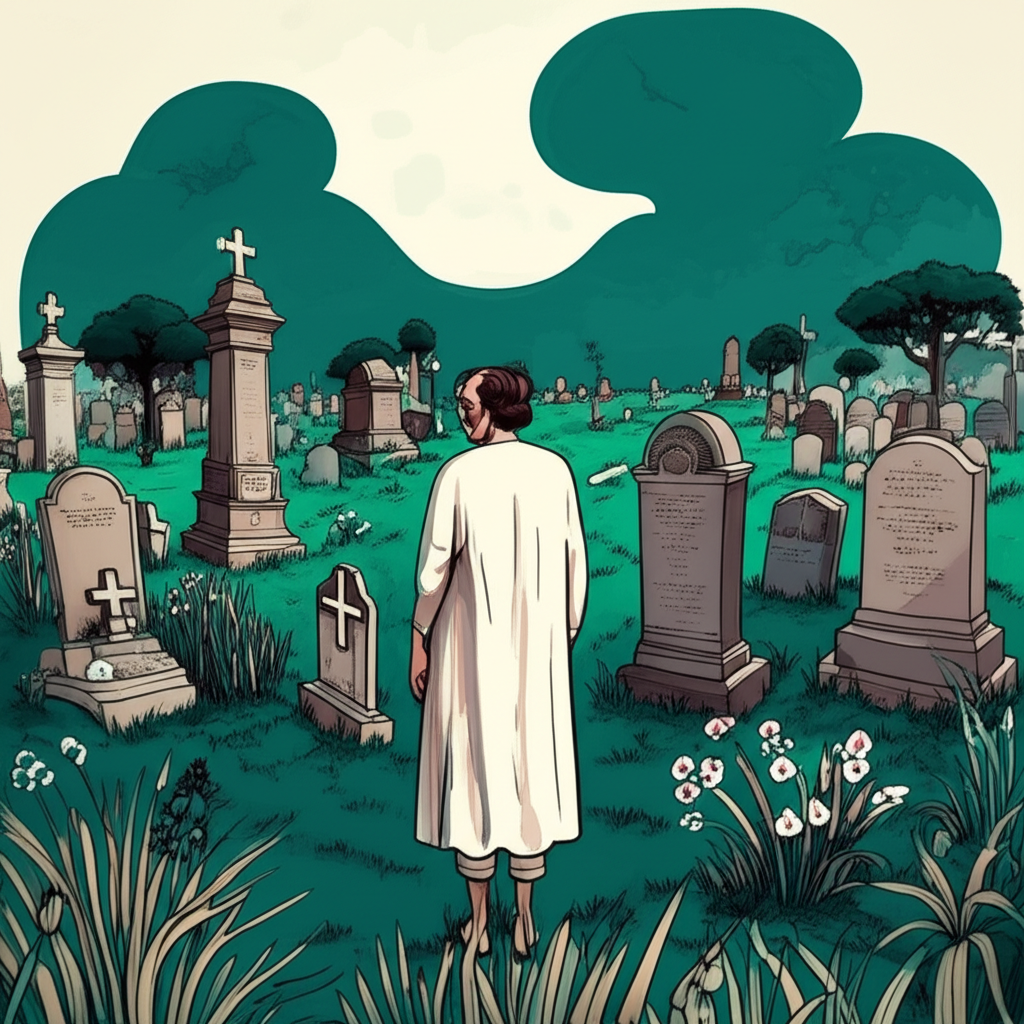
Graveyards, as places of interment and remembrance, have long been associated with a variety of superstitions. Among these, the practice of holding one’s breath when passing a cemetery is a particularly enduring example, reflecting a complex interplay of practical concerns and spiritual beliefs. This article delves into the origins, evolution, and modern interpretation of this widespread superstition.
Historical Background
The roots of the superstition can be traced back to ancient cultures, where burial rites held significant importance. Initially, the rituals surrounding burial grounds were considered sacred duties rather than superstitions. The practice of holding one’s breath likely emerged from a combination of pragmatic health concerns and spiritual beliefs. While early societies lacked a scientific understanding of infectious diseases, the unpleasant odor emanating from decomposing bodies led them to intuitively avoid inhaling what they perceived as harmful vapors. Covering the mouth, therefore, became a customary practice to minimize exposure to these perceived dangers.
Cultural Beliefs and the Significance of Breath
On a spiritual level, the act of breathing was intrinsically linked to the concept of the life force or soul. This association stemmed from the simple observation that the final exhalation accompanied death, suggesting that the spirit departed the body with the last breath. This connection between breath and soul is reflected linguistically across various cultures. In ancient Greek, the word ‘pneuma’ signifies both breath and spirit. Similarly, the English word ‘spirit’ originates from the Latin ‘spiritus,’ also meaning breath. In Hindu philosophy, ‘prana’ encompasses both breath and life force. It was believed that just as the spirit could leave the body upon death, a wandering soul might be inhaled by a living person passing by a burial ground.
Evolution of the Superstition
Over time, these fundamental beliefs were integrated into folklore, further fueled by tales of ghosts, malevolent spirits, and demonic possession. Cemeteries became perceived as gathering places for the spirits of the deceased, either returning to connect with loved ones or trapped in a state of limbo due to their earthly sins. The belief that sinful spirits were more likely to linger in graveyards heightened the perceived risk of possession. Consequently, holding one’s breath became a preventative measure to avoid the potential inhalation of an unwanted or evil soul, effectively acting as a protective barrier against spiritual contamination.
Modern Interpretations
While the scientific understanding of disease transmission has advanced considerably, the superstition of holding one’s breath when passing a cemetery persists in modern society. Though often performed without conscious awareness of its origins, the act serves as a reminder of the enduring power of folklore and the complex relationship between humans and the unknown. The superstition, in its modern form, can be seen as a cultural artifact, a vestige of ancient beliefs that continues to resonate with individuals on a subconscious level, even in the absence of a literal belief in ghosts and possession. It represents a connection to the past, a symbolic acknowledgement of mortality, and a subtle expression of respect for the departed.